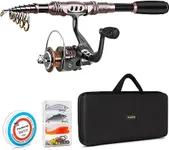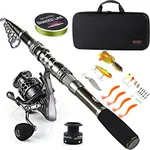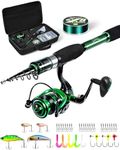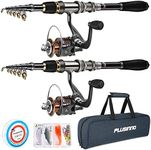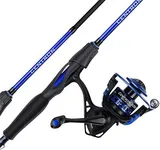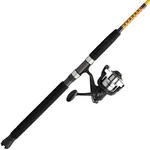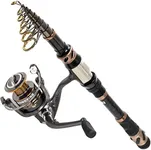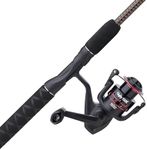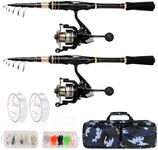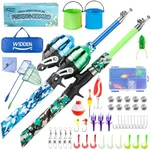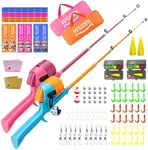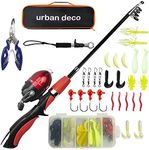Buying Guide for the Best Portable Backpacking Fishing Rods
Choosing the right portable backpacking fishing rod can greatly enhance your fishing experience, especially when you're on the go. The key is to find a rod that balances portability, durability, and functionality. Here are some key specifications to consider when selecting a portable backpacking fishing rod, along with explanations to help you make an informed decision.Rod LengthRod length is the measurement from the tip of the rod to the butt. It affects casting distance, accuracy, and the type of fish you can catch. Shorter rods (under 6 feet) are great for close-quarters fishing and provide better control, making them ideal for small streams or ponds. Medium-length rods (6-7 feet) offer a balance between casting distance and accuracy, suitable for a variety of fishing environments. Longer rods (over 7 feet) are best for long-distance casting and are typically used in open waters. Choose a length based on where you plan to fish and the type of fish you're targeting.
Rod PowerRod power refers to the rod's resistance to bending under load, often categorized as light, medium, or heavy. Light power rods are suitable for small fish and provide a more sensitive feel, making them ideal for catching trout or panfish. Medium power rods are versatile and can handle a wider range of fish sizes, perfect for bass or walleye. Heavy power rods are designed for larger fish and can handle more weight, suitable for species like pike or catfish. Consider the size and weight of the fish you expect to catch when choosing the rod power.
Rod ActionRod action describes how much and where the rod bends when pressure is applied. Fast action rods bend mostly at the tip and are more sensitive, providing quick hook sets and better control for single-hook lures. Medium action rods bend in the top half and offer a balance of sensitivity and flexibility, making them versatile for various fishing techniques. Slow action rods bend throughout the entire length, providing a more forgiving feel and are ideal for casting light baits and catching smaller fish. Your choice should depend on your preferred fishing style and the type of lures you use.
MaterialFishing rods are typically made from graphite, fiberglass, or a composite of both. Graphite rods are lightweight, sensitive, and provide excellent performance, making them a popular choice for many anglers. However, they can be more brittle and prone to breaking. Fiberglass rods are more durable and flexible, making them ideal for beginners or those who need a more rugged rod. Composite rods offer a balance of both materials, providing a mix of sensitivity and durability. Consider your experience level and the conditions you'll be fishing in when selecting the material.
PortabilityPortability is crucial for backpacking fishing rods, as you'll need to carry them over long distances. Telescopic rods collapse down to a compact size, making them easy to transport and store. Multi-piece rods break down into several sections and can be reassembled quickly, offering a good balance between portability and performance. Consider how much space you have in your backpack and how easy it is to assemble and disassemble the rod when choosing the right level of portability for your needs.
WeightThe weight of the fishing rod affects how easy it is to carry and use for extended periods. Lighter rods are easier to handle and reduce fatigue, making them ideal for long backpacking trips. However, they may not be as durable as heavier rods. Heavier rods can handle larger fish and more rugged conditions but may be more cumbersome to carry. Consider the balance between weight and durability based on the length of your trips and the type of fishing you plan to do.
